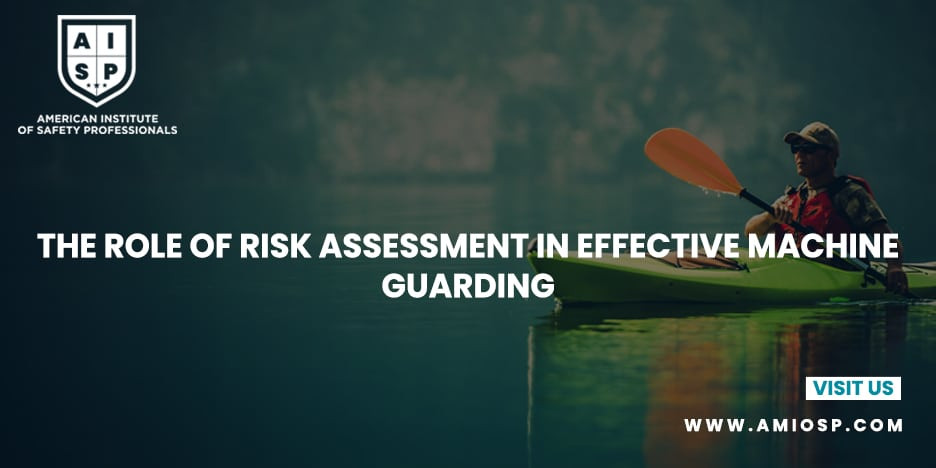In any industrial setting, the safety of workers should be a
top priority. One critical aspect of ensuring worker safety is effective
machine guarding. Machine guarding refers to the implementation of physical
barriers, devices, and safety measures to protect operators and other personnel
from the hazards associated with operating machinery. While machine guarding is
essential, it is equally important to conduct a comprehensive risk assessment
to identify potential hazards and determine the appropriate guarding measures.
Risk assessment plays a vital role in achieving effective machine guarding, and
in this blog post, we will explore its significance in detail.
What is Risk Assessment?
Risk assessment is the process of evaluating potential
hazards and analyzing the level of risk they pose to workers and the
surrounding environment. It involves identifying hazards, assessing the
likelihood and severity of potential incidents, and developing strategies to
mitigate or eliminate those risks. In the context of machine guarding, risk
assessment helps in understanding the specific hazards associated with
machinery and determining the necessary safeguarding measures to prevent
accidents and injuries.
Identifying Hazards
The first step in risk assessment is to identify potential
hazards. When it comes to machine guarding, hazards can include moving parts,
rotating equipment, sharp edges, electrical components, and the release of
hazardous substances. By conducting a thorough inspection and analysis of the
machinery and its operating environment, it is possible to identify these
hazards and understand how they can pose a risk to workers.
Assessing Risk
Once the hazards are identified, the next step is to assess
the level of risk associated with each hazard. Risk assessment takes into
account both the likelihood of an incident occurring and the potential severity
of its consequences. Factors such as the frequency of exposure to the hazard,
the magnitude of the potential harm, and the number of people at risk are
considered during the assessment. This evaluation helps prioritize the risks
and determine the most effective control measures to implement.
Selecting Guarding Measures
Based on the risk assessment, appropriate guarding measures
can be selected and implemented. Machine guarding can take various forms,
including fixed guards, interlocking guards, presence-sensing devices, two-hand
controls, and barriers. The choice of guarding measures depends on the specific
hazards identified and the level of risk associated with each hazard. It is
crucial to ensure that the selected guards are designed, installed, and
maintained properly to provide maximum protection.
Training and Education
In addition to implementing physical guarding measures,
proper training and education for workers are essential to ensure the
effectiveness of machine guarding. Workers should be educated on the potential
hazards associated with the machinery they operate, as well as the importance
of adhering to safety protocols and using guarding devices correctly. Training
programs should emphasize the significance of risk assessment and create
awareness about the various types of hazards that can be encountered in the
workplace.
Regular Review and Updates
Risk assessment is not a one-time task but an ongoing
process. As machinery and work environments evolve, new hazards may arise, and
existing hazards may change. It is crucial to conduct regular reviews of the
risk assessment to ensure that guarding measures remain effective and up to
date. This can involve revisiting hazard identification, reassessing risks, and
making necessary modifications to the guarding systems.
Benefits of Effective Machine Guarding and Risk
Assessment
Implementing effective machine guarding based on a thorough
risk assessment brings numerous benefits to both employers and workers. It
significantly reduces the likelihood of accidents and injuries, thereby
minimizing downtime, workers' compensation claims, and legal liabilities. A safe
working environment also boosts employee morale, productivity, and overall
organizational performance. By prioritizing risk assessment and machine
guarding, employers demonstrate their commitment to worker safety, thereby
fostering a culture of safety throughout the organization.
Conclusion
In conclusion, risk assessment plays a crucial role in
ensuring effective machine guarding. By identifying hazards, assessing risks,
and implementing appropriate guarding measures, employers can create a safer
working environment for their employees. Regular review and updates, along with
comprehensive training and education, further enhance the effectiveness of
machine guarding. Prioritizing risk assessment and machine guarding not only
protects workers from harm but also contributes to increased productivity,
improved employee satisfaction, and overall business success. Safety should
always be a priority, and risk assessment is an indispensable tool in achieving
it.












0 comments
No Comments